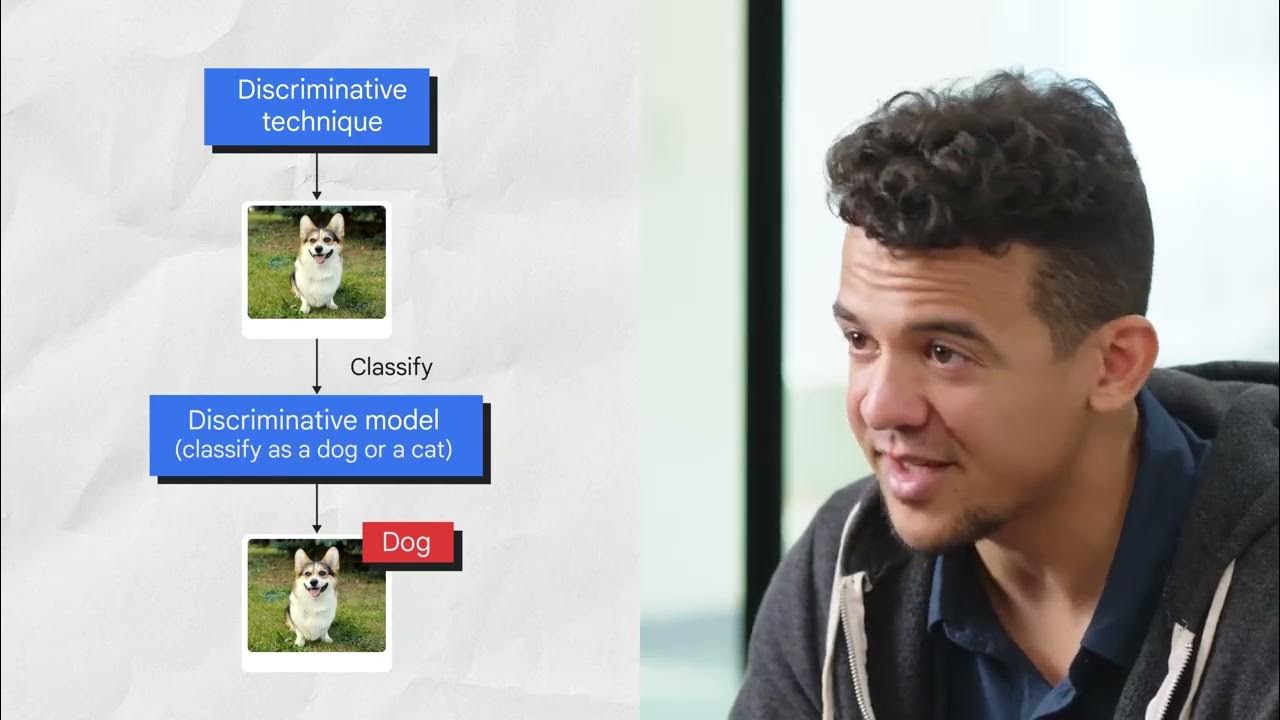Introduction to Generative AI
Summary
TLDRIn this course, Roger Martinez, a Developer Relations Engineer at Google Cloud, introduces the fundamentals of Generative AI (GenAI), covering its definition, underlying technologies, and applications. He explains the difference between AI, machine learning, and deep learning, highlighting the importance of supervised, unsupervised, and semi-supervised learning. The course also explores generative models, their ability to create new content, and how GenAI can be applied across various fields like text, images, code, and video. With a focus on tools like Google’s Vertex AI and Gemini, the course demonstrates how developers can leverage GenAI to innovate and solve real-world problems.
Takeaways
- 😀 Generative AI (GenAI) is a subset of artificial intelligence focused on creating new content such as text, images, and audio based on input data.
- 😀 Artificial Intelligence (AI) is a broad field in computer science focused on creating autonomous systems, while Machine Learning (ML) is a key subset of AI that uses data for training models.
- 😀 Supervised learning relies on labeled data to predict outcomes, whereas unsupervised learning identifies patterns in unlabeled data.
- 😀 Generative AI differs from discriminative models, as it generates new data based on learned patterns rather than classifying or predicting labels.
- 😀 Deep learning uses neural networks to process complex patterns, making it suitable for tasks like image recognition and text generation.
- 😀 Generative AI models, like Large Language Models (LLMs), are capable of generating human-like content in response to specific prompts.
- 😀 The primary use of GenAI models includes text generation, image synthesis, and even audio or video production, offering versatile applications across industries.
- 😀 Vertex AI Studio is a Google Cloud platform that helps developers customize and deploy generative AI models.
- 😀 Gemini is a multimodal AI developed by Google, designed to analyze text, images, and code for generating diverse outputs.
- 😀 Generative AI tools like Vertex AI enable developers to build AI-driven applications like chatbots, search engines, and digital assistants without extensive coding knowledge.
Q & A
What is Generative AI?
-Generative AI is a type of artificial intelligence technology that can produce various types of content, including text, imagery, audio, and synthetic data.
How is AI different from machine learning?
-AI is a branch of computer science focused on creating intelligent systems that can reason, learn, and act autonomously, while machine learning is a subfield of AI that allows systems to learn from data without explicit programming.
What is supervised machine learning?
-Supervised machine learning involves training a model with labeled data (data that comes with a tag), and the model learns to predict outcomes based on this labeled data.
What is the difference between supervised and unsupervised machine learning?
-In supervised learning, the model learns from labeled data to make predictions. In unsupervised learning, the model tries to find patterns or groupings in unlabeled data.
What is deep learning and how does it relate to machine learning?
-Deep learning is a subset of machine learning that uses artificial neural networks with multiple layers to process and learn from complex data patterns, often requiring large datasets.
What are discriminative and generative models in machine learning?
-Discriminative models classify or predict labels based on input data, while generative models learn patterns in data and generate new data instances similar to the data it was trained on.
What is a foundation model in Generative AI?
-A foundation model is a large AI model pre-trained on vast amounts of data and can be fine-tuned for specific tasks like sentiment analysis or object recognition.
What types of content can Generative AI create?
-Generative AI can create various types of content, including text, code, images, audio, video, and more, based on patterns learned from its training data.
What is a transformer in the context of Generative AI?
-A transformer is an architecture used in Generative AI models, consisting of an encoder and a decoder, to process and generate sequences, like language, based on input data.
What are hallucinations in Generative AI models?
-Hallucinations are nonsensical or incorrect outputs generated by models, often due to insufficient or noisy data, lack of context, or inadequate constraints, and can affect the reliability of the generated content.
Outlines

This section is available to paid users only. Please upgrade to access this part.
Upgrade NowMindmap

This section is available to paid users only. Please upgrade to access this part.
Upgrade NowKeywords

This section is available to paid users only. Please upgrade to access this part.
Upgrade NowHighlights

This section is available to paid users only. Please upgrade to access this part.
Upgrade NowTranscripts

This section is available to paid users only. Please upgrade to access this part.
Upgrade Now5.0 / 5 (0 votes)





